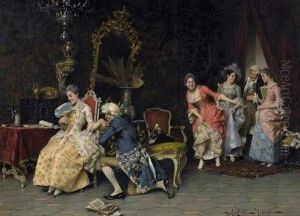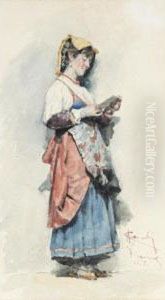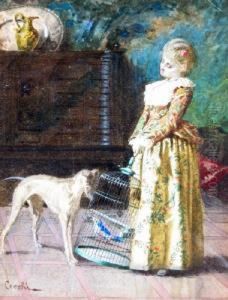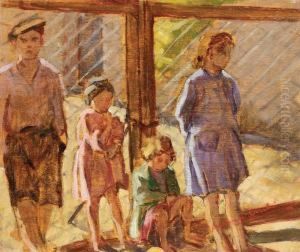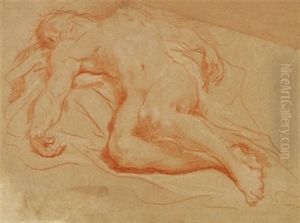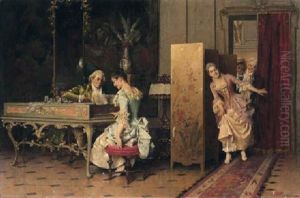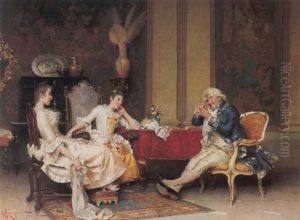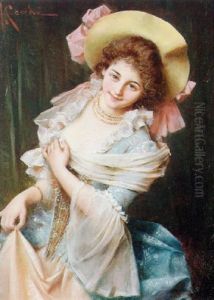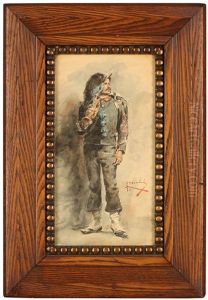Adriano Cecchi Paintings
Adriano Cecchi was an Italian painter, born in Florence in 1850. He was a part of the Italian purist movement, which took place after the unification of Italy and was centered around a return to the simplicity and purity of the art of the early Renaissance. Cecchi's work was heavily influenced by the Florentine and Sienese schools of the 14th and 15th centuries.
During his career, Cecchi became known for his genre scenes, which often depicted everyday life in an idealized, pastoral setting. These scenes were characterized by their detailed figures and vibrant colors. He also painted landscapes and portraits, showing a range of skills and interests in his artistic pursuits.
Cecchi studied at the Academy of Fine Arts in Florence, where he was influenced by his instructors and the artistic atmosphere of the city. His education grounded him in the techniques of the Old Masters, which he would carry into his own work. Florence, being a hub for artists and intellectuals during the 19th century, provided Cecchi with ample inspiration and opportunities for artistic development.
Over the course of his life, Cecchi gained recognition in Italy and abroad. He exhibited his work at important venues such as the Paris Salon, where his pieces were received with acclaim. His contributions to Italian art were appreciated during a time when there was a strong sense of national pride and a desire to establish a distinctly Italian artistic identity following the Risorgimento, the movement for Italian unification.
Adriano Cecchi continued to work and teach in Florence until his death in 1936. His legacy is that of a dedicated artist who sought to capture the spirit of Italy in his paintings while adhering to the stylistic purity that he and his contemporaries valued. His works can be found in various art collections and continue to be studied as examples of 19th-century Italian art.
